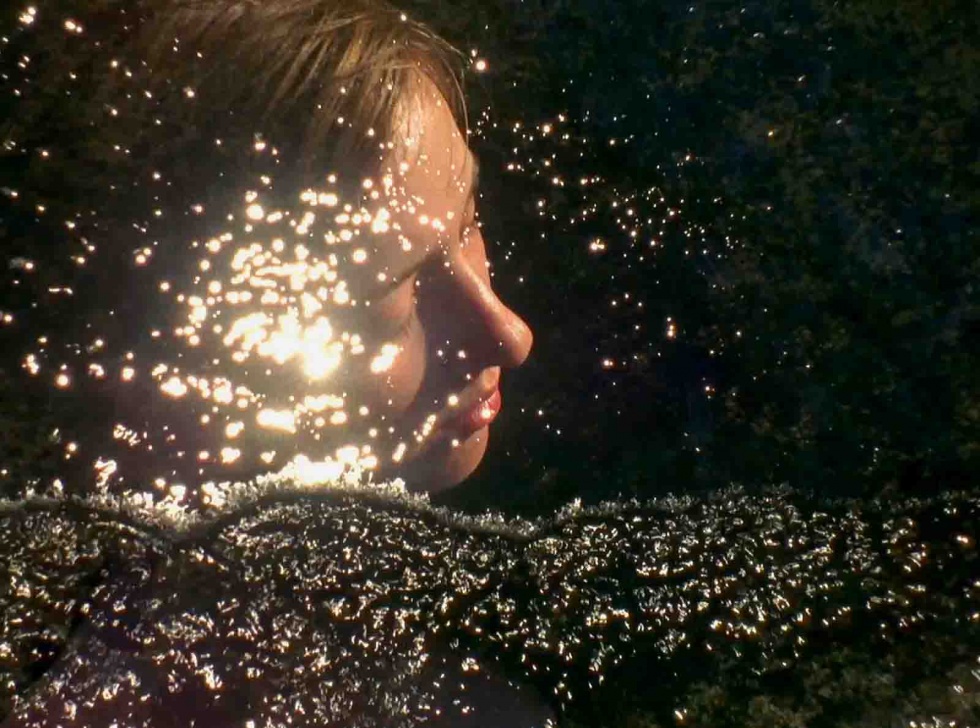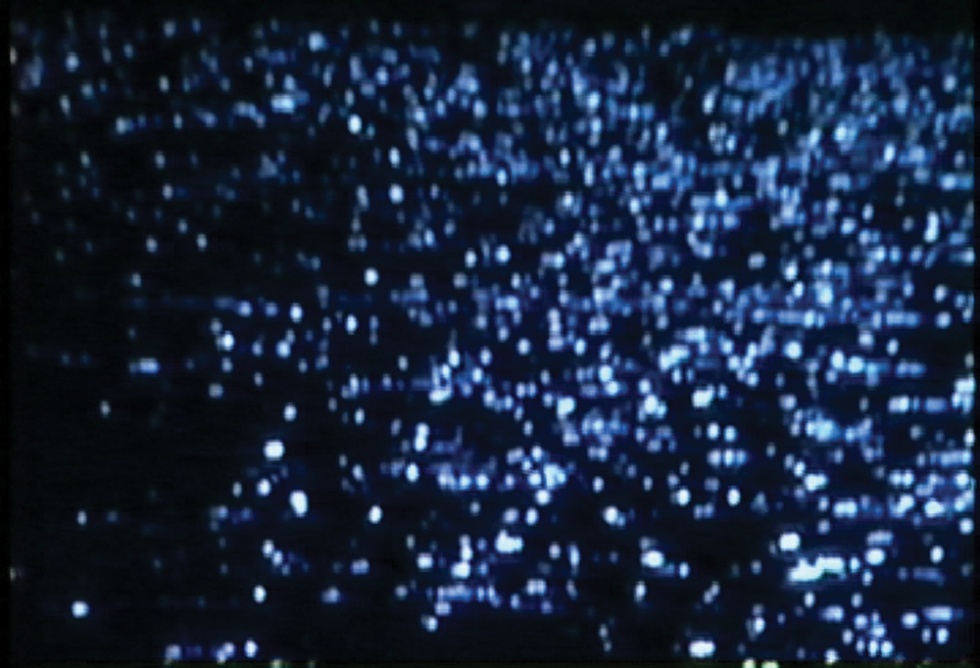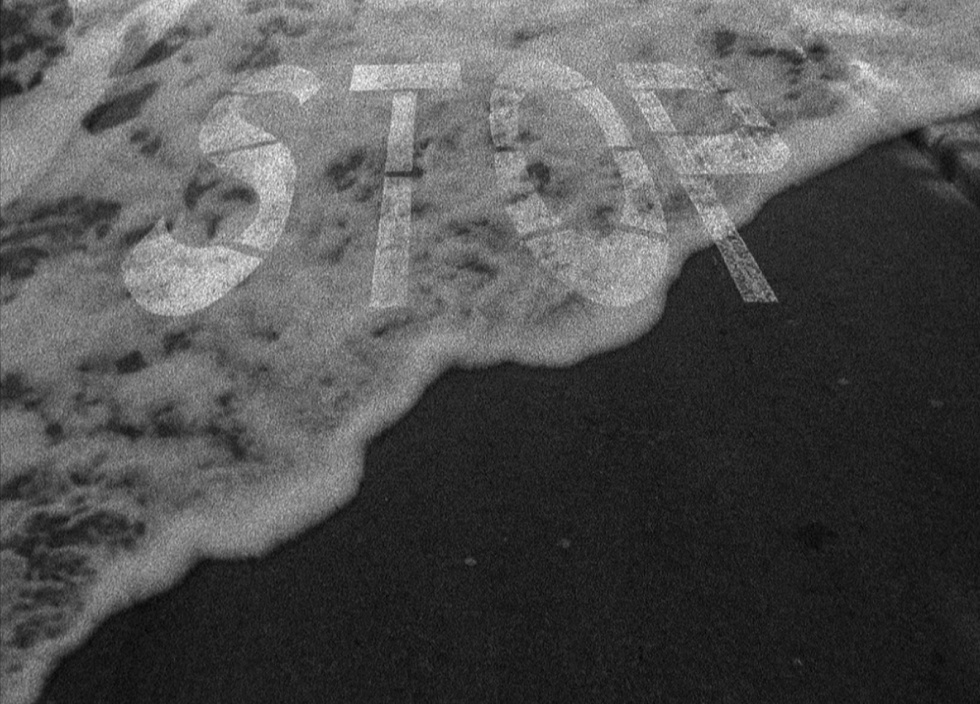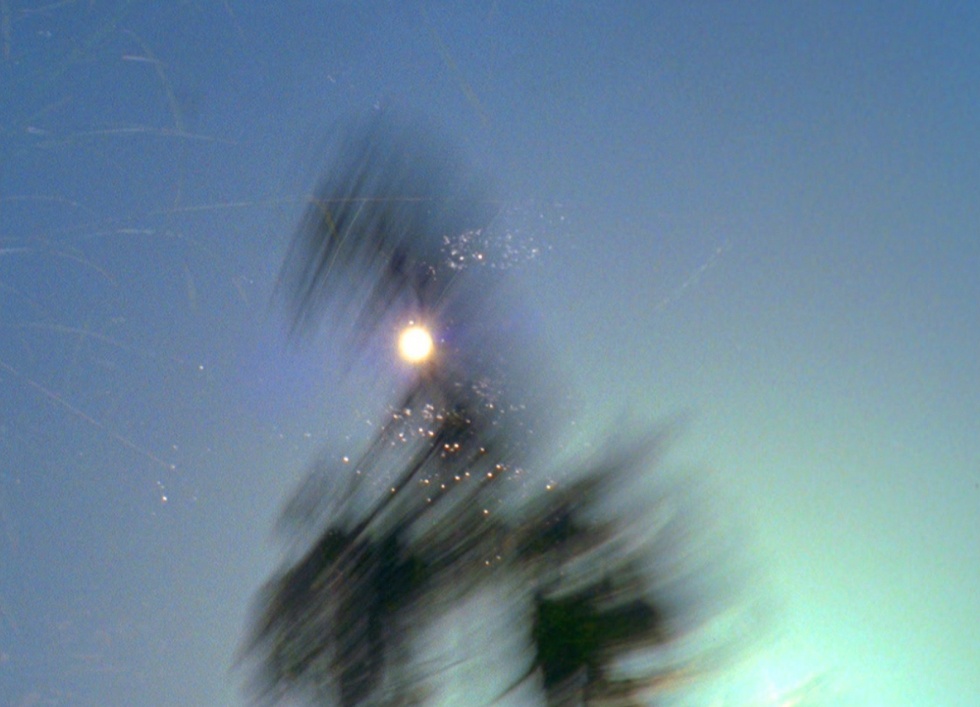On March 20, Boiler Room brought together performances from Grouper and William Basinski—two of today’s most accomplished experimental musicians, both of whom use their deeply compelling compositions to evoke reflections on memory, decay, and environment. An installment of the MoMA PS1 Sunday Sessions, the show was a seamless curation of spiritually connected artists whose works are both intuitive and emotional.
Liz Harris makes chilling music that evokes the intangible. For over a decade, as Grouper, the Portland musician’s nine albums and countless collaborations have made her one of the most compelling ambient artists of our times. The emotional resonance of her music becomes even more palpable when presented alongside the films of San Francisco-based filmmaker Paul Clipson. The two work together frequently, and their shared performances are a great testament to the engulfing power of audiovisual collaboration.
“Liz’s work is very intuitive, very emotional, it’s kind of a conduit,” says Clipson on a Sunday evening at dusk, following their joint performance at MoMA PS1’s Sunday Sessions. “It’s like there’s an electricity in her music, which I love so much, and I think people are really struck by.”

It is apt that for this performance, Harris and Clipson were billed to share the stage with avant-garde composer William Basinski, whose similarly profound work is largely comprised of tape looping and delay composition. At PS1, Basinski played selections from his 2015 projects Cascade / The Deluge. He also performed a selection from The Disintegration Loops, his acclaimed 2001 four-album series, wherein he captured fragments of a looping cassette tape as it repeated and slowly deteriorated. It is a deeply poignant project, and one that he coincidentally finished on September 11, 2001.

Basinski, Harris, and Clipson make work that shares spiritual common ground, creating sonic environments and sombre reflections on concepts of memory. Listening to Harris or Basinski is like listening to sounds of decay, both literal and emotional—half-remembered dreams crackling through the tape hiss, and memories falling further and further into the distance. There’s sadness, but also the beauty within it.
“The whole life and death of these melodies was recorded, remembered, and redeemed. That’s where the transcendentalism comes in. That’s where the hope is.”
To Basinski, that sort of decay can be transcendental. “If you think about nature, leaves fall off the tree, they go into nature and they decay,” he says, sipping a beer and beaming after the show. “All that energy goes into the dirt, and makes it all healthy and perfect for the next little things to shoot up in the spring. It’s all part of a cycle. It’s not the end. Even with The Disintegration Loops, yes, they cascaded into decay; but I was recording it on another medium, so the whole life and death of these melodies were recorded, remembered and redeemed. That’s where the transcendentalism comes in. That’s where the hope is.”
The capacity for a medium to die can be confounding, Clipson adds. “People are very aware of the mortality in things. Not just the obvious definition of the word, but films degrade, they get scratched… Film is almost a natural element, like a skin. It’s very delicate.”
“There’s something that your eye and mind perceives with film,” Basinski says. “It’s light and shadow. Video is different, it’s pixels. Your mind perceives it a different way. And you never know with projectors; they can chew up your film, they can break.”
At PS1, Basinski performed alongside a film by his partner, the painter James Elaine, made from footage taken at Elaine’s family farm in Texas using an old super VHS camcorder. “He was shooting light on a pond with wind,” Basinski explains. “And framing it down so it’s very dark, and then there’s a point where he starts to change the focal length, gradually. That’s when you start to see all of that negative space coming up. It’s almost like these black balls bouncing all around. When I started touring this, I just remembered that piece.”
“You’re aware of repetition. It feels like it’s cycling in on itself. But then it starts to expand, and you’re expanding.”
For Basinski, returning to PS1 felt like a milestone of sorts. “I used to work here,” he says, laughing. “I did installation here for a couple of years, right around when I put out The Disintegration Loops.” And before that, about 20 years ago, he performed here in the courtyard, with short-lived experimental psych-punk band Glass Of Water. “We had that one gig, and then we broke up.”
It’s unsurprising to learn that Clipson and Harris are fans of Basinski’s work. “What’s so incredible about Billy, the music and the images too, is this minimalism on one sense,” says Clipson. “You’re aware of repetition. It feels like it’s cycling in on itself. But then it starts to expand, and you’re expanding. You become more present, and you’re transforming, through how sensitive he is to his world he’s creating sonically.

“He’s giving you so much room to expand, that your feeling is just blossoming. His music makes me think of air. It makes me think of clouds, but also air in the sense of the intangible. It’s very spiritual. It’s leading to something, but it doesn’t announce itself. It’s something that you’re led to through your own activity—your own inner sense of traversing this environment.”
That sense of environment is central to the work of Clipson and Harris as well, and the ways they shape space to transcend the limits of their mediums. The two previously collaborated on a proper film titled Hypnosis Display—a piece they have presented regularly over the past year. But performances like their Boiler Room session are more amorphous; there are no rehearsals for these performances, so neither artist knows what is going to happen.
“Sometimes it feels like the film and the sound are completely synchronised,” Clipson says. “But then sometimes they go off. There was a part where my stepdaughter was dancing on a beach. And it was zooming really fast. And then Liz was really quiet, almost silent. I liked it.”
“When something dramatic happens in a narrative film, everyone in the audience feels a communal thing. They’re terrified, or they’re laughing,” he adds. “The same in music. There’s a dynamic thing of dissonance and distance and proximity.”

Clipson is attracted to film for all of its beauties as much as its challenges; for its tactility, textures, rhythm. He sees these types of free-form film presentations as performative. The instinctive creative process is similar to how Grouper improvises live. “Like today, she was looping her voice, or her guitar sound, or some abstract sound,” he says.
“She’s doing it in a way where she kind of knows what’s going to happen. She practices, but then it’s not the same. And that organic quality is what I’m really attracted to. I shoot, and then I don’t see it for a few weeks, because it has to be processed. So there’s a huge amount of latent excitement embedded in it. Sometimes it’s really like having a dream.”
Clipson’s perspective on the intersections of sound and film are intricate, as are the ways he channels the emotional rhythms of music through film. “Sounds have textures, and it’s almost like running your hand across a wall,” he says. “You feel all of the cracks and things. Music is not analytical first. It’s first experiential. Like when you have that chill, or the excitement, you have it before you think. You feel it. That’s what I’m trying to do with film.”
And ultimately, Clipson says that music-centred spaces and events, like today’s at PS1, are what he finds most inspiring. “For all musical events, a social space is created. I love the fact that it’s temporal, and all of those people never come back together in the same group. It’s a constant process … It’s a bit terrifying, in the way that Liz talks about playing music. Things are coagulating, like a sculpture coming out of an oven. It’s still hot. It’s not finished. It’s very alive.”